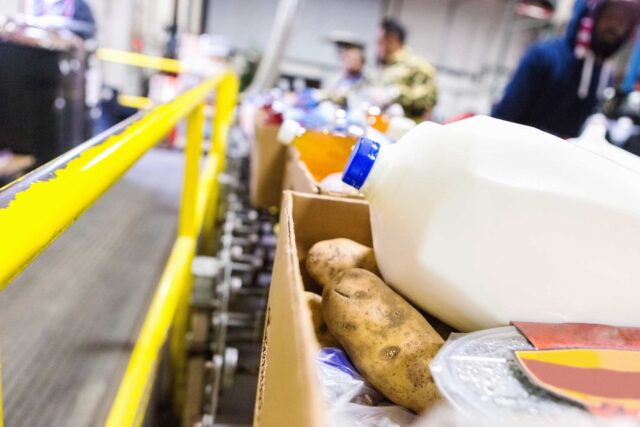Though poverty is typically measured for a calendar year, below we calculate poverty levels for the first quarter of 2023 to offer a more current perspective amid a shifting economic and policy landscape.
Poverty in California increased between 2021 and early 2023.
- The poverty rate rose from 11.7% in fall 2021 to 13.2% in the first quarter of 2023, according to the California Poverty Measure (CPM), a research effort by PPIC and the Stanford Center on Poverty and Inequality that accounts for housing costs and safety net benefits. Despite this uptick, poverty was still lower than before the pandemic (16.4% in 2019). In early 2023, about 5 million Californians were under the CPM poverty line (on average $39,900 yearly for a family of two adults and two children).
- Child poverty jumped from 9.0% in fall 2021 to 13.8% in early 2023; child poverty was 17.6% in 2019.
- Pandemic relief programs mitigated poverty substantially in 2021. By 2022, national statistics show poverty had increased after the end of several temporary programs. Our methodology accounts for the sunsetting of additional programs and thus provides more current poverty estimates. The only major pandemic safety net expansion still in place in early 2023 was expanded food assistance.
Nearly a third of Californians are living in or near poverty.
- In early 2023, 31.1% of residents were poor or near poor (with resources up to one and a half times the CPM poverty line), up from 28.7% in fall 2021.
- The share of Californians who were near poor rose slightly from 17.0% in fall 2021 to 17.9% in early 2023.
- Deep poverty—the share of families with less than half the resources to meet basic needs—remained essentially the same (3.3%–3.4%).
Without social safety net programs, more Californians would live in poverty.
- In early 2023, about 3.2 million more Californians (8.4%) would have been in poverty without safety net programs. CalFresh kept 1.1 million Californians out of poverty (3.0%), up from 1 million in fall 2021, due mainly to increased enrollment. The federal Earned Income Tax Credit lowered poverty by 1.1 points; after the end of its temporary expansion, the federal Child Tax Credit (CTC) lowered poverty by only 0.8 points (compared to 1.8 points in fall 2021). In early 2023, federal housing subsidies and Supplemental Security Income (SSI) had the same effect on poverty as the federal EITC.
- Most safety net programs prioritize children—and in early 2023, these programs kept 14.9% of children (about 1.3 million) out of poverty.
- Los Angeles County (15.5%) and San Diego County (15.0%) had the highest poverty rates; the Central Valley and Sierra region had the lowest (10.7%), largely due to lower housing costs. Across legislative districts, rates differ greatly (26.1% to 6.1%).
- Safety net programs reduce poverty most in inland areas: without them, poverty would be 14.4 points higher in the Central Valley and Sierra region, but only 4.3 points higher in the Bay Area.
Poverty was highest among seniors, Latinos, and less-educated adults.
- In early 2023, poverty was markedly higher for seniors (15.2%) than for children (13.8%) and adults 18–64 (12.6%)—a change from pre-pandemic years, when child poverty was highest.
- The Latino poverty rate increased to 16.9% (from 13.5% in fall 2021). Latinos remained disproportionately poor—comprising about half (50.7%) of poor Californians, but 39.7% of all Californians. About 13.6% of African Americans, 11.5% of Asian Americans/Pacific Islanders, and 10.2% of whites lived in poverty.
- The poverty rate for foreign-born Californians was 17.6%, compared to 11.5% for US-born residents; poverty among undocumented immigrants was 29.6%.
- Education is tied to poverty rates: 6.4% of college graduates age 25–64 and 22.3% of adults age 25–64 without a high school diploma lived in poverty. Since fall 2021, poverty increased 2.8 points among less-educated adults.
Most poor families in California are working.
- In early 2023, nearly 76.0% of poor Californians lived in families with at least one working adult, excluding families with only adults 65 and older.
- For 43.8% of those in poverty, at least one family member reported working full time for the entire year; for 32.2%, a family member worked part time and/or part of the year.
- Among working adults age 25–64, 8.1% were poor, with rates much higher among those working part time (18.5%) as opposed to full time (5.3%).
Topics
COVID-19 Economic Mobility Economic Trends Economy Health & Safety Net Population Poverty & InequalityLearn More

A Look at Demographic Differences in Poverty across Regions in California

California’s Nutrition Safety Net

Income Inequality in California

The Impact of Health Insurance on Poverty in California

The Working Poor in California

Understanding the Reach of the California Earned Income Tax Credit


